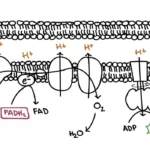چکیده:
نخستین گام برای درک شکلگیری و تحول کهکشانها در طول زمان کیهانی بررسی فیزیک و موازنهٔ انرژی محیطی است که در آن ساختارهای کهکشانی در مقیاسهای مختلف شکل میگیرند. مدلهای نظری کنونی، برافزایش گاز از رشتههای کیهانی یا از محیط اطراف کهکشان را -به عنوان مکانیزم اصلی برای حفظ ستارهزایی و تغذیهٔ هستهٔ فعال کهکشانی- پیشنهاد میکنند. این مدلها بازخورد ابرنواختری یا هسته فعال را به عنوان مکانیسمهایی برای خاموششدن کهکشانها با زمان کیهانی پیشنهاد میکنند؛ چراکه در این مدلها بازخورد باعث ازدسترفتنِ گازی میشود که برای ستارهسازی مهم است، اما مطالعات رصدی نشان میدهند که بازخورد میتواند خود به ستارهزایی کمک کند؛ درنتیجه، این موضوع هنوز بهعنوان یک چالش اصلی باقی مانده است.
به نظر میرسد برخی مفاهیم اساسی در مورد شکلگیری ساختارها در محیط بینستارهای و محیط میانکهکشانی مغفول مانده است؛ از جمله اینکه فرایندهای فیزیکی و عوامل حاکم بر تشکیل ساختار در مقیاسهای مختلف فضایی چیست؟ چگونه موازنهٔ فشار و انرژی در طول زمان کیهانی در این محیطها تغییر میکند؟ بهزودی آرایهٔ رادیویی کیلومتر مربعی (اس.کی.ای) بزرگترین رصدخانهٔ دنیا خواهد بود که با قابلیتهای ابزاری نوین، پنجرهٔ جدیدی را برای روشنکردن این موضوع بازمیکند.
رصدهای پیوستار رادیویی توسط این آرایه میتواند ذرات پرانرژی و میدانهای مغناطیسی را، نهتنها در نواحی روشن و ستارهزا، بلکه در ابرهای مولکولی تاریک ردیابی کند. این امر ما را قادر میسازد تا با دقتی بالا، نقش پرتوهای کیهانی و میدانهای مغناطیسی را در تشکیل و کنترل ساختارهای کهکشانی بررسی کنیم. در مقیاسهای بزرگتر، اسکا میتواند قید دقیقتری بر مدلهای مادهٔ تاریک -که توزیع آن توسط تلسکوپ فضایی هابل و دوربین انرژی تاریک نقشهبرداری شده است- ایجاد کند.
دکتر فاطمه طباطبایی از پژوهشگاه دانشهای بنیادی در پژوهشکدهٔ فیزیک پژوهشگاه دانشهای بنیادی در این زمینه سخنرانی خواهد کرد.
اطلاعات لازم برای شرکت در این سخنرانی را در زیر ببینید. در ضمن، ویدیوی این سخنرانی پس از برگزاری از طریق همین صفحه در دسترس شما قرار خواهد گرفت.
Physics Colloquium
Title: Uncovering Energetic Process In The Interstellar/Intergalactic Medium With The Square Kilometre Array
Speaker: Dr. Fatemeh Tabatabaei
Affiliation: School of Astronomy, IPM
Abstract
Investigating the physics and energetic of the medium where galactic structures, on various scales, are formed is the most fundamental step to understand the formation and evolution of galaxies. Modern galaxy evolution models suggest gas accretion from the intergalactic medium (IGM) or from cosmic filaments as a mechanism to maintain star formation and active galactic nucleus (AGN). Through gas heating and/or gas removal, these models also propose supernova feedback and AGN feedback as mechanisms to quench massive star formation. Observational studies, however, have not reached to a conclusive result showing that feedback can, in some cases, trigger star formation, leaving the issue as an open challenge. It seems that some basic concepts about the formation of structures in the interstellar medium (ISM) and the IGM are missed: What are physical parameters/agents governing the structure formation on various scales? How does the ISM/IGM energy balance change over cosmic time? The advent of the square kilometre array (SKA) and its instrumental capabilities tracing the most energetic ISM components has opened a new window shedding light on the issue. The SKA’s sensitive radio continuum observations will trace high-energy particles and magnetic fields not only in star forming regions and AGNs, but also in more quiescent regions in molecular clouds and diffuse IGM, enabling us to study the role of magnetic fields/cosmic rays in structure formation. Sensitive radio continuum observations on large scales may also bring constrains on the entity of dark matter mapped by the Hubble Space Telescope (HST) and Dark Energy Camera (DECam).
Date and time
Wednesday, April 6, 2022
16:00 (Tehran)
17 Farvardin 1401
Link:




